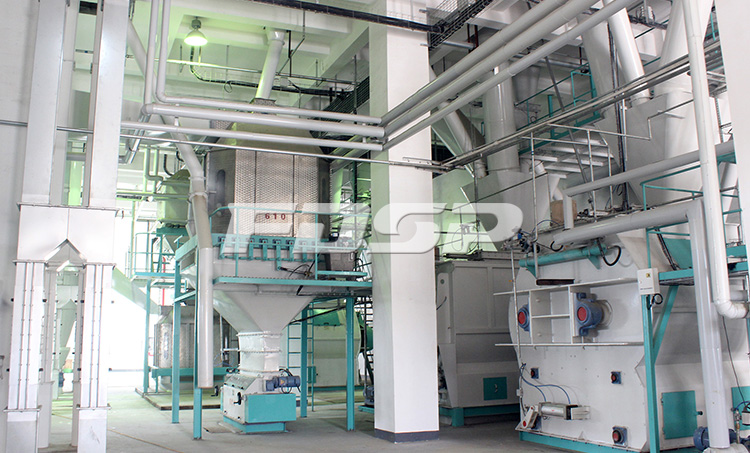
The traditional granulation process includes: granulation, cooling, crushing, and classification. This process is usually used to produce livestock and poultry feed or other low-energy feed, and the product is usually loose. Nowadays, the granulation process in some factories is much more complicated, including the following processing steps:
Conditioning promotes starch gelatinization and protein denaturation, which not only improves the nutritional value of feed, but also improves the granulation performance of the material, thereby improving the processing quality of granular products. Moisture, temperature and time are the three elements of starch gelatinization. The conditioning makes the raw material contact with the steam, so as the conditioning conditions increase, the degree of starch gelatinization increases. After the starch is gelatinized, it changes from the original powdery granular state to the gelatinous state. Ungelatinized raw starch produces greater resistance when passing through the die hole like sand, which reduces the output of pellets, consumes more pelletizing energy, and affects the working life of the die. After the product is granulated, the raw starch and other components do not adhere to each other, resulting in loose granules and high breakage rate. After conditioning, the starch is more fully gelatinized. The gelatinized starch plays a lubricating effect when passing through the mold hole. When forming granules, the gel fills the gaps between other components and Bond the components together to make the product compact and firm. The main function of post-curing is to improve the water resistance of fish and shrimp feed. The surface of the particles is hydrothermally treated by steam to change the surface structure of the particles and prevent the particles from collapsing in the water. After the ordinary pellet feed is subjected to post-curing treatment, the steam treatment time is: 0, 30, 60, 90s, and the static water resistance time is: 0.2, 6, 16, 18h, and the effect is extremely significant.
The introduction of puffing, conditioning and post-curing has a positive effect on improving the quality of pellet feed, but these three treatments all use heat treatment, and some heat-sensitive nutrients contained in the feed will be destroyed and invalidated when heated. For example, vitamin C is mostly inactivated during processing. In addition, some high-energy feeds contain a lot of fats, and adding these fats before pelleting will inevitably cause the pellets to be loose and fragile. External coating technology is an effective way to solve such problems. FDSP (Liangyou shares) has many years of experience in the construction of feed factories and the transformation of various old factories. It can tailor-made according to the actual requirements of customers and solve various professional problems for you. Welcome to consult

